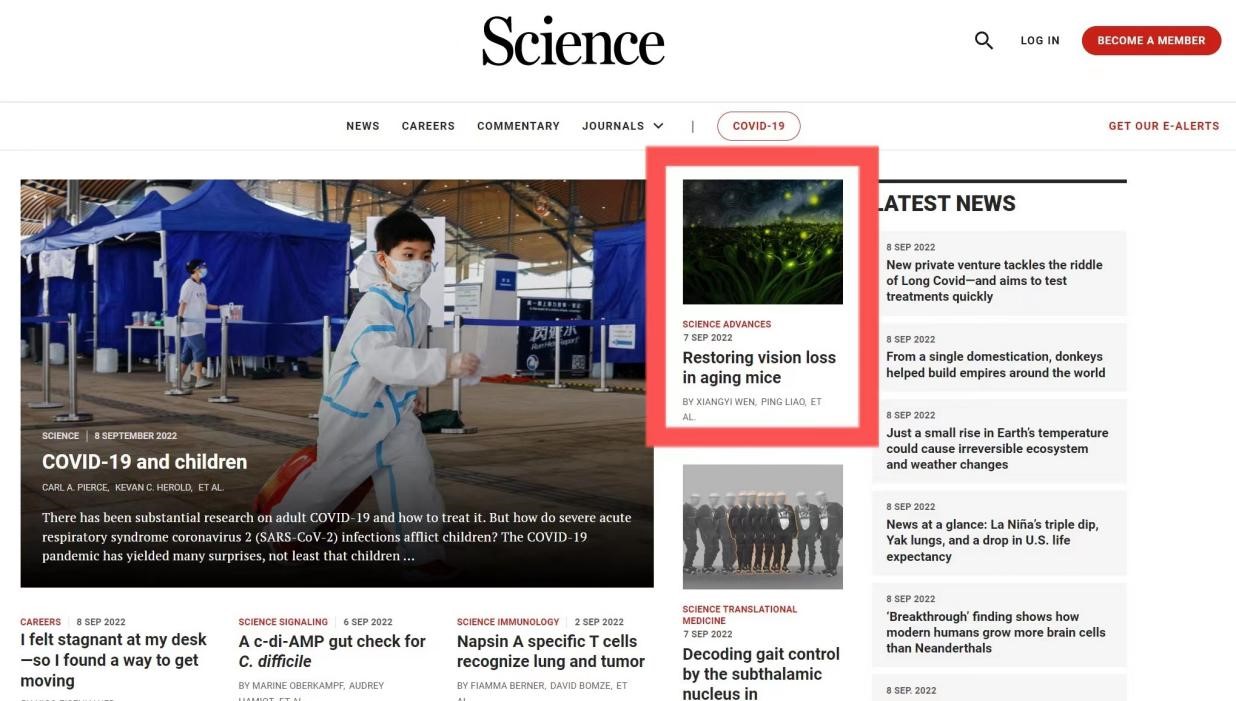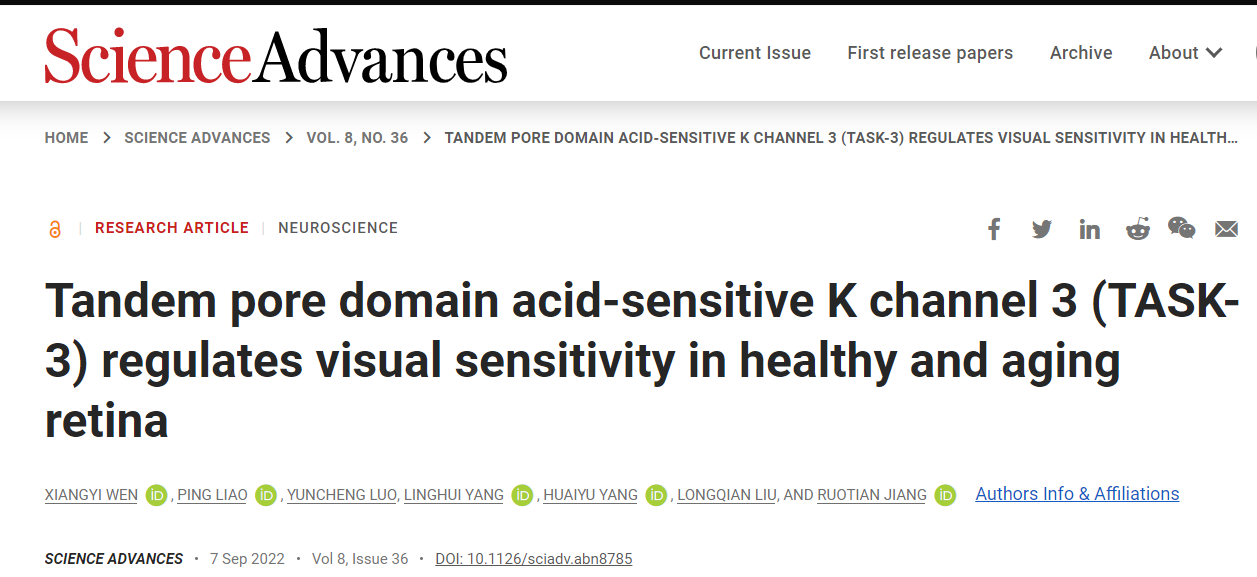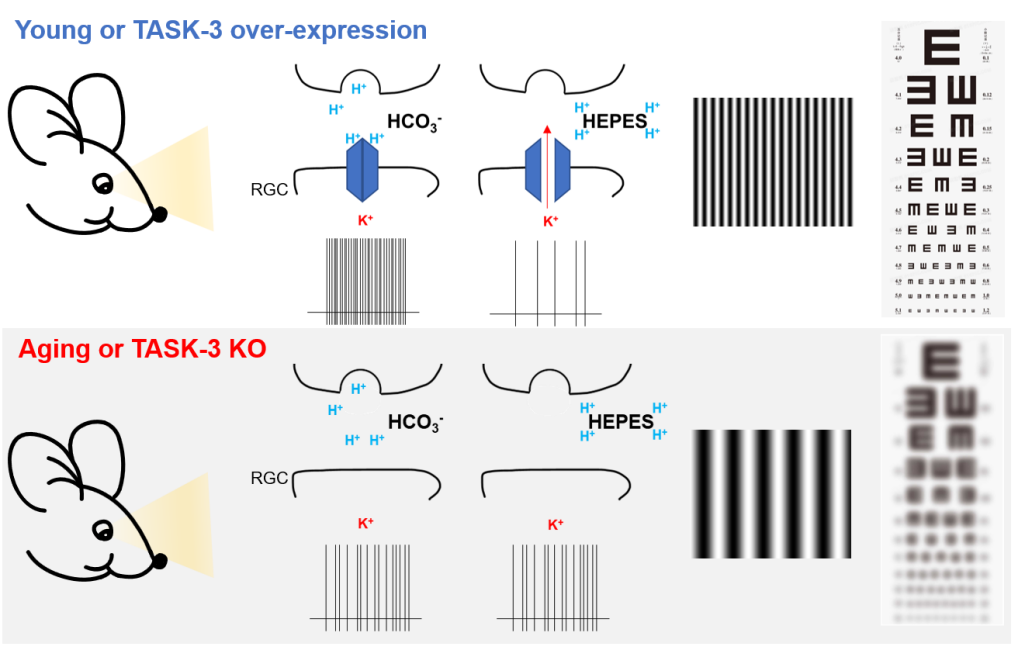The research team of Ruotian Jiang from the National-Local Joint Engineering Center for Anaesthesia Transformation Medicine of West China Hospital, and the research team of Longqian Liu, a professor from the Department of Ophthalmology/Optometry, recently published online a research paper entitled “Tandem Pore Domain Acid Sensitive K Channel 3 (TASK-3) Regulates Visual Sensitivity in Healthy and Aging Retina” inScience Advances. This study reveals for the first time the mechanism of a two-pore domain potassium channels ( K2P ) in retinal visual signal processing, and provides a potential target and method for slowing down the decline of visual function during aging.


The research paper is a featured story on the website homepage of Science. The research fellow Ruotian Jiang is the corresponding author of this paper, and Dr. Xiangyi Wen from the Department of Ophthalmology/Optometry is the first author. Prof. Qianlong Liu, department head of the Department of Optometry and Visual Science has offered guidance and support for the research.

“The retina not only detects and transmits light signals but also performs computations before transmitting visual signals to the brain. Retinal ganglion cells (RGCs), the output neurons of the retina, collect presynaptic signals from retinal bipolar cells and amacrine cells and sculpt those signals by specific neuronal circuits and ion channels. Although various ion channel types modulate the neuronal excitability and the pattern of spikes in RGCs via different channel properties, the molecular mechanisms and principles regulating visual signal transmission have not been fully explored.” (Introduction)
“Several K2Ps have been detected in mouse retina using quantitative polymerase chain reaction and immunohistochemistry. Given the potential lack of specificity and sensitivity of immunohistochemistry, we used in situ RNA hybridization (RNAscope technique) to map transcripts encoding TASK-1 and TASK-3, TWIK-related potassium channel 1 (TREK-1) and TREK-2, and THIK-1 in mouse retina. We detected no or very low levels of transcripts encoding tandem-pore domain halothane-inhibited potassium channel 1 (THIK-1) (gene name: Kcnk13), TREK-1 (gene name: Kcnk2), and TREK-2 (gene name: Kcnk10) in retinal slices (fig. S1, B to D).---” (Results)

“Retinal ganglion cells (RGCs) not only collect but also integrate visual signals and send them from the retina to the brain. The mechanisms underlying the RGC integration of synaptic activity within retinal circuits have not been fully explored. Here, we identified a pronounced expression of tandem pore domain acid-sensitive potassium channel 3 (TASK-3), a two–pore domain potassium channel (K2P), in RGCs. By using a specific antagonist and TASK-3 knockout mice, we found that TASK-3 regulates the intrinsic excitability and the light sensitivity of RGCs by sensing neuronal activity–dependent extracellular acidification. In vivo, the blockade or loss of TASK-3 dampened pupillary light reflex, visual acuity, and contrast sensitivity. Furthermore, overexpressing TASK-3 specifically in RGCs using an adeno-associated virus approach restored the visual function of TASK-3 knockout mice and aged mice where the expression and function of TASK-3 were reduced. Thus, our results provide evidence that implicates a critical role of K2P in visual processing in the retina.” (Abstract)
